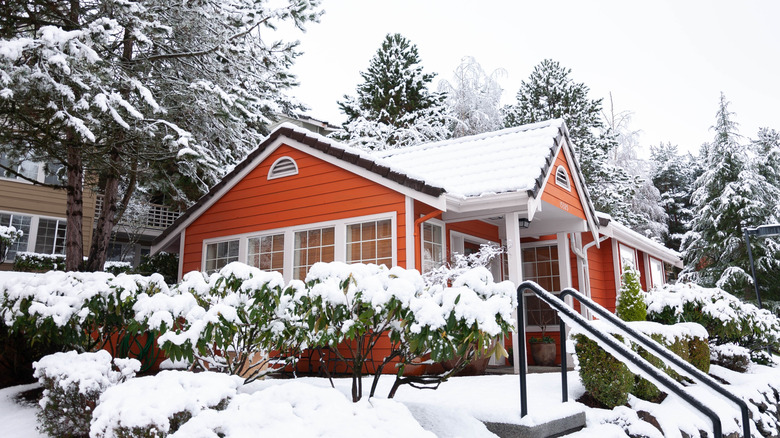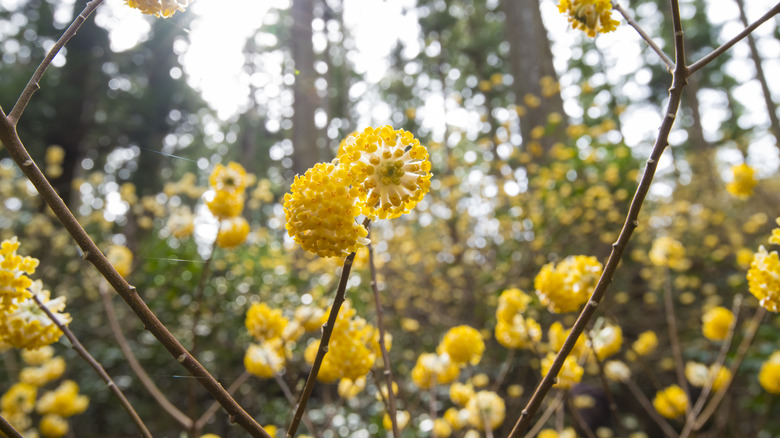Plant This Fragrant Bush For Showstopping Outdoor Appeal All Year Long
It often seems that no matter how colorful and full of sweet-smelling plants your yard may be during spring and summer, it becomes drab and gray once late autumn and winter arrive. Of course, if you pick the right trees and shrubs, that doesn't have to be the case, and your landscaping can have year-round appeal. One of the best options for winter flowers is the paperbush (Edgeworthia chrysantha).
Native to China, paperbushes are hardy in USDA zones 7 through 10. Their beautiful yellow and white flowers generally start blooming in December after the leaves have already fallen for the year. These flowers smell similar to gardenias and often last all season and even into spring, making them perfect for anyone who wants a fragrant garden in the winter. Once the blooms are gone, their uniquely colored foliage takes the center stage and continues to provide visual interest until the blooms return at the end of fall.
Paperbushes generally only grow about 6 feet tall and wide. With this compact size, even gardeners with smaller yards may be able to find a spot for this unique beauty. Pairing them with evergreen ground covers is perfect for giving your yard stunning color all year round and helping you fight the winter blues.
Caring for paperbushes
Some people find these shrubs a bit challenging to grow, given their preference for the perfect mix of sun and shade and their love of moist and fertile soil. They aren't picky about everything, though. They handle a wide range of soil acidity levels and tolerate full sun, though their foliage doesn't look as vibrant without enough shade. As long as you can meet their needs, though, paperbushes will reward you with beautiful blue-green leaves in summer; these turn yellow in autumn, and, of course, they will be covered with their stunning flowers in winter and early spring.
It's not only people that enjoy paperbushes. They're also a hit with butterflies and bees. They could be a perfect way to add some flowers for your local pollinators during the months when little else is available. If you grow them in addition to pollinator-friendly early spring perennials like Dutchman's breeches, your yard is sure to be one of the first to be visited by bees and butterflies when they emerge from hibernation.

